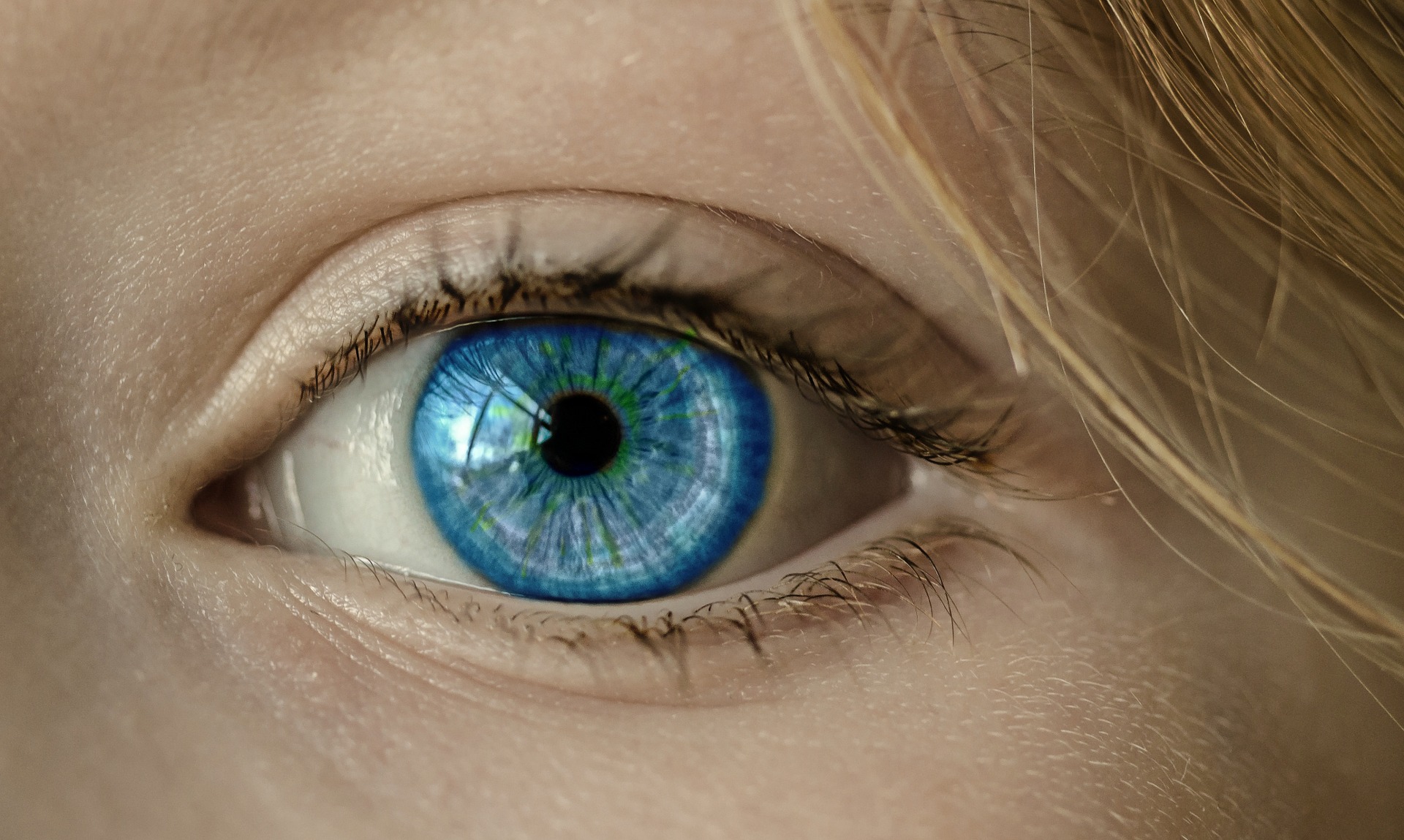Shaping Your Sight: An In-depth Look at Astigmatism
 Eyeglasses on display (EYE00137)
Eyeglasses on display (EYE00137)
Vision problems – it’s a huge hassle. It can affect your day-to-day life. There’s a range of vision problems that people face. One of the most common is astigmatism. It affects thousands of people across the globe. This condition causes symptoms such as blurred and distorted vision. To tackle this condition efficiently, it is important to learn about it.
We’ll be going into detail about the condition in this article. This includes its causes, symptoms, diagnosis, and various treatment methods. So, whether you are facing astigmatism symptoms and want to deal with the condition or just want to learn more about it, this is the article for you. Let’s embark on a journey towards better eyesight and overall eye health!
What is Astigmatism?
When you look at something, light enters the eye and bends as it passes through the cornea and lens. Following this, the rays converge at the retina, which then allows you to see things. The cornea and lens of people without astigmatism have a smooth, symmetrical curvature that resembles a sphere. Astigmatism, on the other hand, causes the cornea or lens (or both) to have an irregular shape resembling rugby or football. Because of this irregularity, light rays entering the eye converge at several different locations on the retina, causing lines to appear blurry. Due to this, astigmatism causes a person to see blurry images and distorted lines.
Within astigmatism, there are two types which have different features. They are classified based on the curvature of the cornea or lens:
- Corneal Astigmatism: This type of condition is the most typical form. It happens when the cornea has an uneven curvature, causing lines to converge at different locations in the retina.
- Lenticular Astigmatism: In this type, the irregularity lies in the lens of the eye rather than the cornea.
A common association between astigmatism and other vision problems is myopia (nearsightedness) or hyperopia (farsightedness). It might have existed since birth or just started to manifest now for a variety of reasons. Let’s explore astigmatism’s causes, symptoms, diagnosis, and treatment options to get a thorough understanding of how it affects vision.
Causes of Astigmatism
Genetics and eye conditions are the two main contributing factors to astigmatism, a condition that affects vision. Understanding these factors helps us better understand how astigmatism forms.
- Genetics: Genetics play an important role in a variety of health issues faced by people throughout their lives. Similarly, astigmatism chances can increase if a person has certain genes or an irregular cornea shape from birth.
- Eye Surgeries: The eye is very fragile. Sometimes, it can be damaged during surgery. Major eye procedures can lead to scarring and changes in the cornea’s shape, which are causes of astigmatism.
- Idiopathic: Sometimes, there is no known cause for astigmatism, even after multiple tests. In this situation, it is referred to as idiopathic astigmatism.
Symptoms/Diagnosis of Astigmatism
Astigmatism symptoms can vary in severity, and individuals may experience:
- Blurred or distorted vision at various distances.
- Eyestrain, headaches, or discomfort, especially after prolonged visual tasks.
- Difficulty seeing fine details or reading small print.
- Squinting to improve focus on objects.
- Double vision in some cases.
If you have the symptoms, what should you do next? Well, the ideal thing to do is head straight to a doctor and get one of these tests done:
- Visual Acuity Test: This is a common test that uses letters to understand how well you can see things.
- Keratometry: Measures the curvature of the cornea to detect irregularities.
- Refraction Test: Determines the exact prescription needed for corrective lenses.
- Corneal Topography: Creates a detailed map of the cornea’s surface to identify irregularities.
- Pupil Dilation: Enlarges the pupils for a more comprehensive view of the eye’s structures.
A timely and accurate diagnosis can lead to appropriate astigmatism treatment, ensuring clearer vision and improved quality of life.
Treatment Options for Astigmatism
1. Prescription Glasses
Astigmatism can be easily and frequently treated with glasses with special cylindrical lenses. These lenses make up for the lens’s or cornea’s uneven curvature, enabling light to focus on the retina clearly.
 Two eyeglasses on display (Spectus_GEo_Performance_5324)
Two eyeglasses on display (Spectus_GEo_Performance_5324)
2. Contact Lenses
Toric contact lenses are designed to correct astigmatism. These specialized lenses have different powers in different meridians, accommodating the varying curvature of the eye’s surface. The Acuvue Oasys 1-day lenses and Acuvue Moist are great options to deal with astigmatism.
 Boxes of ACUVUE MOIST (Acuvue-2)
Boxes of ACUVUE MOIST (Acuvue-2)
3. Refractive Surgery
For those seeking a more permanent solution, refractive surgeries can correct astigmatism. Common procedures include:
- LASIK (Laser-Assisted In Situ Keratomileusis): This surgery uses a laser to reshape the cornea, correcting its curvature and improving vision.
- PRK (Photorefractive Keratectomy): Similar to LASIK, but the surgeon removes the cornea’s outer layer before using the laser.
- LASEK (Laser Epithelial Keratomileusis): Combines aspects of both LASIK and PRK, involving the creation of a thin corneal flap.
- Implantable Lenses: In some cases, implantable lenses, known as phakic intraocular lenses, may be an option.
Living with Astigmatism
Managing astigmatism effectively involves adopting certain lifestyle adjustments and habits to ensure clear vision and overall eye health. Here are some valuable tips for individuals living with astigmatism:
Eye Care Changes
- Regular Eye Exams: Many people ignore getting their eyes checked regularly, and this causes issues to seep through. Even if you don’t notice any new symptoms, getting a regular eye exam can help you understand your condition and keep it in check so you can live with astigmatism.
- Wear Corrective Lenses: Corrective lenses are specific lenses that help deal with conditions such as astigmatism. Make sure you always wear corrective lenses to improve your quality of life and vision. For example, the Acuvue Moist are daily lenses that can help clear your vision.
- Proper Contact Lens Care: When using contact lenses, it’s important to stick to the cleaning and replacement schedule provided. By practicing good lens hygiene and wearing them as directed, you can minimize the chances of experiencing eye infections or discomfort.
 Boxes of contact lenses on display (C229_1)
Boxes of contact lenses on display (C229_1)
Lifestyle Changes
- Avoid Eye Rubbing: Refrain from rubbing your eyes, as this can exacerbate astigmatism-related symptoms and potentially damage your cornea.
- Adjust Lighting: Ensure adequate lighting when reading or working on screens to reduce eye strain. Avoid glare by positioning screens away from windows or using anti-glare filters. Along with adjusting lighting, you can also wear computer glasses when looking at a screen, such as the Spectus Rain and Spectus Camille.
- Rest Your Eyes: Working your eyes by staring at a screen or focus points for too long can lead to unnecessary strain. So, take breaks where you close your eyes and relax for some time.
 Spectus eyeglasses on display (Spectus)
Spectus eyeglasses on display (Spectus)
Conclusion
In conclusion, astigmatism is a common eye problem that causes blurry vision and can make it difficult to see clearly. So, it is important to learn about astigmatism diagnosis, symptoms, causes, and treatment. A great way to do this is regular eye check-ups so that any issues are checked by professionals and you get proper advice. You’ve got options like glasses, contacts, or even getting laser surgery like LASIK to fix astigmatism and make life better. No matter what you plan on doing, just know that Astigmatism is a manageable condition, and there are many products available to deal with it. For some options, check out the corrective contact lenses at Eyewa.







